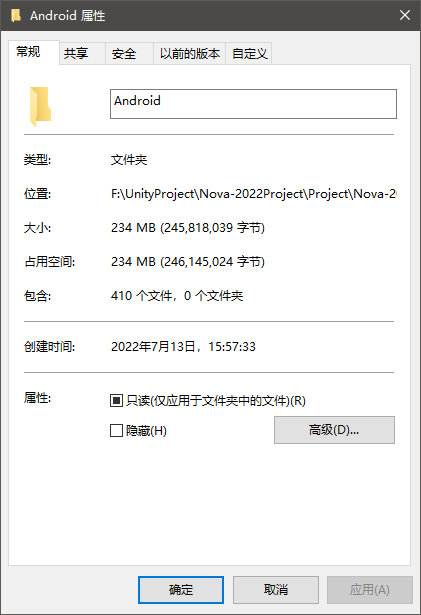文章目录
- C2F 模块介绍
- 定义与基本原理
- 应用场景
- C2f模块修改步骤
- (1) C2f_up模块编辑
- (2)在__init_.py+block.py中声明
- (3)在task.py中声明
- yolov8引入C2f_up模块
- yolov8.yaml
- yolov8.yaml引入C2f_up模块
- C2f改进对YOLOv8检测具有多方面的好处
C2F 模块介绍
定义与基本原理
 C2F(Coarse - to - Fine)模块通常是一种在计算机视觉或其他领域中,用于处理从粗糙到精细层次信息的模块。例如,在图像分割任务中,C2F 模块可能先从整个图像的大致区域划分入手(粗粒度处理),然后逐步细化分割边界和区域内部的细节(细粒度处理)。
从网络结构角度看,它可能包含多个层次的处理单元。在早期阶段,这些单元会处理经过下采样后的低分辨率图像信息,以获取具有较大感受野的全局特征。随着网络的推进,通过上采样等操作,将早期的全局特征和经过处理的高分辨率局部特征相结合,逐步恢复细节信息,从而实现从粗到细的信息整合。
应用场景
图像分割:在医学图像分割领域,如对脑部 MRI 图像进行组织分割时,C2F 模块可以先利用低分辨率的图像大致区分出大脑的主要区域(如白质、灰质、脑脊液等),然后在精细阶段准确划分各个组织的边界。在语义分割任务中,对于自然场景图像,C2F 模块有助于区分天空、建筑、道路等大的物体类别,并且能够很好地描绘出物体的边缘和细节,比如路边树木的轮廓等。
目标检测:在目标检测任务中,C2F 模块可以先定位目标大致所在的区域(粗定位),然后对目标的边界框和类别进行更精确的确定(精确定位和分类)。例如在行人检测中,先找到可能包含行人的大致场景区域,再细化到行人的具体姿态、衣着细节等特征,从而更准确地识别行人个体。
C2f模块修改步骤
(1) C2f_up模块编辑
C2f模块位置位于ultralytics/nn/modules/block.py内,如下图所示:

class C2f(nn.Module):
"""Faster Implementation of CSP Bottleneck with 2 convolutions."""
def __init__(self, c1, c2, n=1, shortcut=False, g=1, e=0.5):
"""Initialize CSP bottleneck layer with two convolutions with arguments ch_in, ch_out, number, shortcut, groups,
expansion.
"""
super().__init__()
self.c = int(c2 * e) # hidden channels
self.cv1 = Conv(c1, 2 * self.c, 1, 1)
self.cv2 = Conv((2 + n) * self.c, c2, 1) # optional act=FReLU(c2)
self.m = nn.ModuleList(Bottleneck(self.c, self.c, shortcut, g, k=((3, 3), (3, 3)), e=1.0) for _ in range(n))
def forward(self, x):
"""Forward pass through C2f layer."""
y = list(self.cv1(x).chunk(2, 1))
y.extend(m(y[-1]) for m in self.m)
return self.cv2(torch.cat(y, 1))
def forward_split(self, x):
"""Forward pass using split() instead of chunk()."""
y = list(self.cv1(x).split((self.c, self.c), 1))
y.extend(m(y[-1]) for m in self.m)
return self.cv2(torch.cat(y, 1))
改进后代码:
class C2f_up(nn.Module):
"""Faster Implementation of CSP Bottleneck with 2 convolutions."""
def __init__(self, c1, c2, n=1, shortcut=False, g=1, e=0.5):
"""Initialize CSP bottleneck layer with two convolutions with arguments ch_in, ch_out, number, shortcut, groups,
expansion.
"""
super().__init__()
self.c = int(c2 * e) # hidden channels
self.cv1 = Conv(c1, 2 * self.c, 1, 1)
self.cv2 = Conv((2 + n) * self.c, c2, 1) # optional act=FReLU(c2)
self.m = nn.SiLU(nn.ModuleList(Bottleneck(self.c, self.c, shortcut, g, k=((3, 3), (3, 3)), e=1.0) for _ in range(n)))
def forward(self, x):
"""Forward pass through C2f layer."""
y = list(self.cv1(x).chunk(2, 1))
y.extend(m(y[-1]) for m in self.m)
return self.cv2(torch.cat(y, 1))
def forward_split(self, x):
"""Forward pass using split() instead of chunk()."""
y = list(self.cv1(x).split((self.c, self.c), 1))
y.extend(m(y[-1]) for m in self.m)
return self.cv2(torch.cat(y, 1))
(2)在__init_.py+block.py中声明


(3)在task.py中声明

yolov8引入C2f_up模块
yolov8.yaml
# Ultralytics YOLO 🚀, AGPL-3.0 license
# YOLOv8 object detection model with P3-P5 outputs. For Usage examples see https://docs.ultralytics.com/tasks/detect
# Parameters
nc: 80 # number of classes
scales: # model compound scaling constants, i.e. 'model=yolov8n.yaml' will call yolov8.yaml with scale 'n'
# [depth, width, max_channels]
n: [0.33, 0.25, 1024] # YOLOv8n summary: 225 layers, 3157200 parameters, 3157184 gradients, 8.9 GFLOPs
s: [0.33, 0.50, 1024] # YOLOv8s summary: 225 layers, 11166560 parameters, 11166544 gradients, 28.8 GFLOPs
m: [0.67, 0.75, 768] # YOLOv8m summary: 295 layers, 25902640 parameters, 25902624 gradients, 79.3 GFLOPs
l: [1.00, 1.00, 512] # YOLOv8l summary: 365 layers, 43691520 parameters, 43691504 gradients, 165.7 GFLOPs
x: [1.00, 1.25, 512] # YOLOv8x summary: 365 layers, 68229648 parameters, 68229632 gradients, 258.5 GFLOPs
# YOLOv8.0n backbone
backbone:
# [from, repeats, module, args]
- [-1, 1, Conv, [64, 3, 2]] # 0-P1/2
- [-1, 1, Conv, [128, 3, 2]] # 1-P2/4
- [-1, 3, C2f, [128, True]]
- [-1, 1, Conv, [256, 3, 2]] # 3-P3/8
- [-1, 6, C2f, [256, True]]
- [-1, 1, Conv, [512, 3, 2]] # 5-P4/16
- [-1, 6, C2f, [512, True]]
- [-1, 1, Conv, [1024, 3, 2]] # 7-P5/32
- [-1, 3, C2f, [1024, True]]
- [-1, 1, SPPF, [1024, 5]] # 9
# YOLOv8.0n head
head:
- [-1, 1, nn.Upsample, [None, 2, 'nearest']]
- [[-1, 6], 1, Concat, [1]] # cat backbone P4
- [-1, 3, C2f, [512]] # 12
- [-1, 1, nn.Upsample, [None, 2, 'nearest']]
- [[-1, 4], 1, Concat, [1]] # cat backbone P3
- [-1, 3, C2f, [256]] # 15 (P3/8-small)
- [-1, 1, Conv, [256, 3, 2]]
- [[-1, 12], 1, Concat, [1]] # cat head P4
- [-1, 3, C2f, [512]] # 18 (P4/16-medium)
- [-1, 1, Conv, [512, 3, 2]]
- [[-1, 9], 1, Concat, [1]] # cat head P5
- [-1, 3, C2f, [1024]] # 21 (P5/32-large)
- [[15, 18, 21], 1, Detect, [nc]] # Detect(P3, P4, P5)
yolov8.yaml引入C2f_up模块
# Ultralytics YOLO 🚀, AGPL-3.0 license
# YOLOv8 object detection model with P3-P5 outputs. For Usage examples see https://docs.ultralytics.com/tasks/detect
# Parameters
nc: 80 # number of classes
scales: # model compound scaling constants, i.e. 'model=yolov8n.yaml' will call yolov8.yaml with scale 'n'
# [depth, width, max_channels]
n: [0.33, 0.25, 1024] # YOLOv8n summary: 225 layers, 3157200 parameters, 3157184 gradients, 8.9 GFLOPs
s: [0.33, 0.50, 1024] # YOLOv8s summary: 225 layers, 11166560 parameters, 11166544 gradients, 28.8 GFLOPs
m: [0.67, 0.75, 768] # YOLOv8m summary: 295 layers, 25902640 parameters, 25902624 gradients, 79.3 GFLOPs
l: [1.00, 1.00, 512] # YOLOv8l summary: 365 layers, 43691520 parameters, 43691504 gradients, 165.7 GFLOPs
x: [1.00, 1.25, 512] # YOLOv8x summary: 365 layers, 68229648 parameters, 68229632 gradients, 258.5 GFLOPs
# YOLOv8.0n backbone
backbone:
# [from, repeats, module, args]
- [-1, 1, Conv, [64, 3, 2]] # 0-P1/2
- [-1, 1, Conv, [128, 3, 2]] # 1-P2/4
- [-1, 3, C2f, [128, True]]
- [-1, 1, Conv, [256, 3, 2]] # 3-P3/8
- [-1, 6, C2f, [256, True]]
- [-1, 1, Conv, [512, 3, 2]] # 5-P4/16
- [-1, 6, C2f, [512, True]]
- [-1, 1, Conv, [1024, 3, 2]] # 7-P5/32
- [-1, 3, C2f, [1024, True]]
- [-1, 1, SPPF, [1024, 5]] # 9
# YOLOv8.0n head
head:
- [-1, 1, nn.Upsample, [None, 2, 'nearest']]
- [[-1, 6], 1, Concat, [1]] # cat backbone P4
- [-1, 3, C2f_up, [512]] # 12
- [-1, 1, nn.Upsample, [None, 2, 'nearest']]
- [[-1, 4], 1, Concat, [1]] # cat backbone P3
- [-1, 3, C2f_up, [256]] # 15 (P3/8-small)
- [-1, 1, GhostConv, [256, 3, 2]]
- [[-1, 12], 1, Concat, [1]] # cat head P4
- [-1, 3, C2f_up, [512]] # 18 (P4/16-medium)
- [-1, 1, GhostConv, [512, 3, 2]]
- [[-1, 9], 1, Concat, [1]] # cat head P5
- [-1, 3, C2f_up, [1024]] # 21 (P5/32-large)
- [[15, 18, 21], 1, Detect, [nc]] # Detect(P3, P4, P5)
改进前:

改进后:

C2f改进对YOLOv8检测具有多方面的好处
- 特征融合更高效:
- 多尺度特征融合增强:C2f模块能够将来自不同层级的特征图进行融合,使模型获得既有高分辨率又有丰富语义信息的特征图。这有助于提高模型对不同尺度物体的检测能力,无论是小目标还是大目标,都能更好地被检测和识别。例如,在复杂的交通场景中,对于远处的小行人和近处的大型车辆,改进后的YOLOv8都能准确检测。
- 梯度流信息更丰富:C2f改进可能引入了新的结构或操作,增加了模型的梯度流分支,从而提供更丰富的梯度信息。这有助于模型更好地学习到图像中的特征,加快收敛速度和收敛效果,提高训练效率。
- 模型性能提升:
- 检测精度提高:通过更有效的特征融合和更丰富的特征表示,C2f改进后的YOLOv8能够更准确地定位和分类目标,从而提高检测精度。在面对复杂背景、遮挡等情况时,模型能够更好地提取目标的特征,减少误检和漏检。
- 模型鲁棒性增强:改进后的C2f模块使模型对输入数据的变化具有更强的适应性,例如在不同光照条件、不同视角、不同图像质量等情况下,模型仍然能够保持较好的检测性能,提高了模型的鲁棒性。
- 计算效率优化:
- 参数数量减少:C2f改进可能会对模块的结构进行优化,减少不必要的参数数量,从而降低模型的存储需求和计算复杂度。这对于在资源有限的设备上部署模型非常重要,例如嵌入式设备、移动设备等,可以使模型更易于部署和运行。
- 推理速度加快:在保持检测精度的前提下,优化后的C2f模块能够减少计算量,从而加快模型的推理速度,提高实时性。这对于需要快速处理大量图像数据的应用场景,如视频监控、自动驾驶等,具有重要的意义。
- 易于集成和扩展:
- 模块灵活性提高:C2f改进后的模块具有更高的灵活性,可以方便地与其他模块或技术进行集成。例如,可以与注意力机制、特征增强模块等相结合,进一步提升模型的性能。
- 可扩展性强:为研究人员和开发者提供了更多的优化空间,可以根据具体的应用需求和性能要求,对模型进行进一步的改进和扩展,以满足不同场景下的检测任务。

![[大模型]视频生成-Sora简析](https://i-blog.csdnimg.cn/direct/38a676c7c17a4171b5737c82091afb1b.png)

















